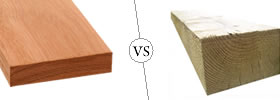Difference between Smartphone and Touch Phone
Key Difference: Smartphone is a mobile phone that operates on an operating system, similar to a mini computer. Smartphones are basically that – a mini computer. Touch phones are any phones that have touch capabilities and a touch screen. A touch screen is an electronic visual display that allows users to access any features on the phone by touching them with fingers or a stylus.
 Smartphone and touch phones are related concepts and are often confusing for many people. Let’s try and simplify it for all the non-techies out there. Smartphone is a category for cell phone, which incorporates all phones that have computing capabilities along allowing users to make/receive calls and make/receive text messages. Touch phone is more of a feature than a classification. Touch phones are basically any phone that allows touch capabilities; it allows users to touch to access anything on their phone. Many smartphone these days have full touch capability, classifying them as smartphones as well as touch phones.
Smartphone and touch phones are related concepts and are often confusing for many people. Let’s try and simplify it for all the non-techies out there. Smartphone is a category for cell phone, which incorporates all phones that have computing capabilities along allowing users to make/receive calls and make/receive text messages. Touch phone is more of a feature than a classification. Touch phones are basically any phone that allows touch capabilities; it allows users to touch to access anything on their phone. Many smartphone these days have full touch capability, classifying them as smartphones as well as touch phones.
Smartphone is a mobile phone that operates on an operating system, similar to a mini computer. Smartphones are basically that – a mini computer. They offer a variety of features such as calling capabilities, computing capabilities, video conferencing, online surfing, cameras, media players, GPS navigation units, etc. Any mobile phone that lets you do the work of a computer is considered as a smartphone. Smartphone are powered by operating systems such as Android, iOS, Windows Mobile, etc. The term ‘smartphone’ was introduced into the market by Ericsson in 1997, when it used the word to describe its GS 88 ‘Penelope’ concept as a smartphone. There is no clear distinction that decides which phones are smartphone and which phones are not. However, with the increasing technology and offerings in a phone, the category has expanded to include all the new features that are currently available in the market.
 Touch phones are any phones that have touch capabilities and a touch screen. A touch screen is an electronic visual display that allows users to access any features on the phone by touching them with fingers or a stylus. The touchscreen allows users to control the phone/tablet or any device with their fingers instead of control buttons, mouse or keyboard. Touch phones can have limited touch capabilities, full touch capabilities or multi-touch capabilities. Phones with limited touch capabilities allow only limited features or functions that can be touched, while other controls must be accessed through keys. Full touch capabilities allow users to control all aspects of the phone including typing using an on-screen keyboard. Multi-touch capabilities allow the device to register the press or touch of more than one points of contact with the surface. Multi-touch allows the user to touch or press two objects at the same time on the screen or allows multiple users to touch the screen and registers both touches.
Touch phones are any phones that have touch capabilities and a touch screen. A touch screen is an electronic visual display that allows users to access any features on the phone by touching them with fingers or a stylus. The touchscreen allows users to control the phone/tablet or any device with their fingers instead of control buttons, mouse or keyboard. Touch phones can have limited touch capabilities, full touch capabilities or multi-touch capabilities. Phones with limited touch capabilities allow only limited features or functions that can be touched, while other controls must be accessed through keys. Full touch capabilities allow users to control all aspects of the phone including typing using an on-screen keyboard. Multi-touch capabilities allow the device to register the press or touch of more than one points of contact with the surface. Multi-touch allows the user to touch or press two objects at the same time on the screen or allows multiple users to touch the screen and registers both touches.
With the constant upgrades in technology, smartphones and touch phones have merged into one and the same. In the quest to make smartphones less bulky and more technologically advanced, smartphones offer touch capabilities in almost all models, with some providing an extra sliding keyboard or keypad in addition to touch capabilities. This is one of the reasons for the common confusion between the two; however, not all smartphones have to be touch, while not all touch phones have to be smart. There are many touch phones that do not offer computing capabilities, but still allow touch in basic models. Many smartphones such as the older BlackBerry models were considered as smartphones but did not allow touch capabilities until their recent models.
Image Courtesy: blogs.cio.com, techcrunch.com









Add new comment